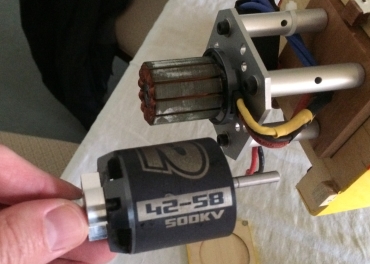When running an IC engine or electric motor much above tick-over we know it’s prudent to stand behind the prop in case something ‘lets go’. If you’re anything like me, then you will observe this simple precaution most of the time but just occasionally you’ll stay in front of your own or someone else’s model while you/they rev the nuts off it. Should it all go wrong, then the engine might not be the only thing to lose its nuts.
The snag is that props don’t come off that often, which is really a good thing I suppose, but it can make you a bit blasé about taking precautions. I have recently had two incidents where the prop, complete with spinner, came off and hurtled away at great speed from the rest of the model.
On the first occasion, I was testing a Saito 115 four stroke engine and had already had the prop on and off a couple of times. I guess I had not done the locking nut up tightly enough and the whole lot flew off at near full power. It flew forward in a nice straight line and struck the ground about 6 metres away. It then careened into a trellis and a fence, coming to rest nine metres away (a nicely rounded 3 fence panels).
On the second occasion (Easter Sunday), a failed E-clip meant that the rotor housing and shaft of the electric motor I was testing, joined forces with the prop and spinner for their brief and wild excursion. The rear wheel of Matt’s Landover put an end to their travel ambitions. I guess they travelled about 4-6 metres.
Both motors were swinging 15” props, which are certainly capable of inflicting deep and nasty cuts.

Another reason not to stay in front is that there is also a possibility that the whole aircraft might escape its restraint. Of course I’m just reinforcing what we have all been taught, understand and practice pretty well really. I just think it’s good to have the occasional refresher.
PS: I replaced the E-clip and made a collet that screwed into a flat I ground into the shaft. That should hold the bleeder on.

